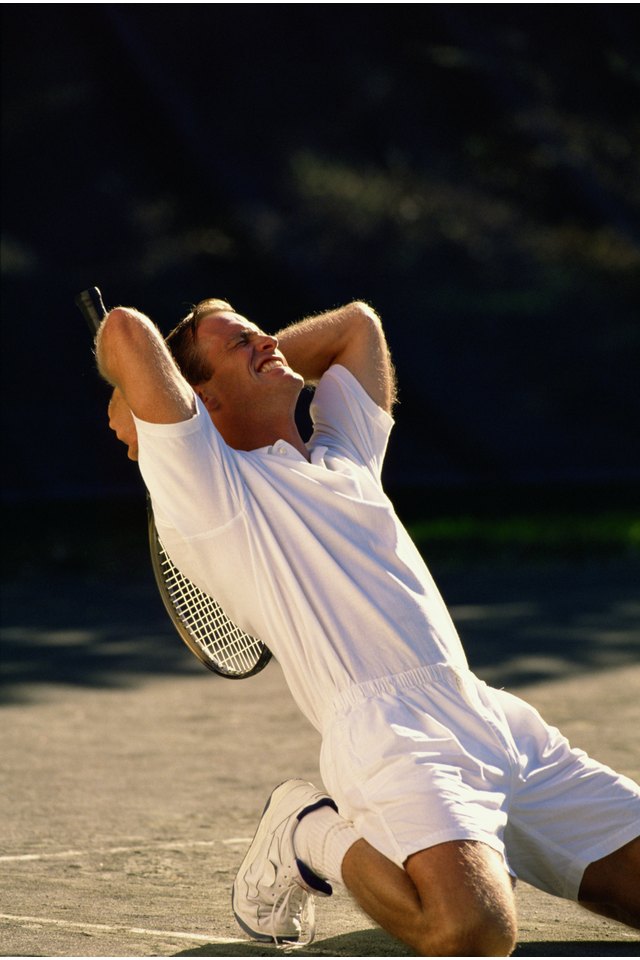Activities That Require Good Reaction Time

The space between a stimulus and the beginning of the muscle response to that stimulus is known as reaction time. Reaction time, along with agility, coordination, balance, speed and power, are key components of skill-related fitness. Good reaction time translates to success in sports and in life activities that require strong motor skills. It’s also one of the critical factors for safeguarding health and independence as you age.
Muscle Reactions
Activity engages fast twitch and slow twitch muscles. Fast twitch muscle fibers are the ones that control reaction time and agility. They excel in the explosive, brief anaerobic moves of the sprinter and the weightlifter, and it takes a powerful force to enlist them. Experts at the Miami Valley Hospital Sports Medicine Center recommend specific training for improved agility and reaction time with exercises such as ladder drills, reaction balls and plyometric jumping. Aerobic activity utilizes slow twitch muscles first so, in order to get to the fast twitch response, you have to instill the habit with repetitive anaerobic exercise. But the training is worth the trouble. Faster reaction time gives you a significant competitive edge in sports and helps to protect you from injury in daily life.
Talent, Tendency and Experience
Reaction time depends on a number of factors that are influenced by genetics and years of practice. The best athletes are better at "reading" their opponents. They scan constantly for more information, analyze visual clues more intently and rapidly than average players and use their experience and skills to select the most advantageous response. Peak Performance lists several indicators of rapid reaction time that include visual acuity: sharp eyesight; contrast sensitivity: the ability to see clearly in variable light conditions and to distinguish among shades of gray; and auditory acuity: a split-second reaction to sound that signals the muscles to move. Sport-specific exercise trains the muscles to perform smoothly and efficiently in response to stimuli, which also decreases reaction time.
Fast Moves
Good reaction time is valuable in any sport but there are some activities that are hard to perform skillfully without it. Tennis, squash, badminton, ping pong, cricket, basketball, soccer, sprinting, speed skating, cycling and hockey victories all hinge on quick response. UK Athletics coach Brian Mackenzie recommends several reaction speed drills that improve sport-specific response to an external cue. For sports, like basketball, that require control of a ball, jog or run in a relaxed way while controlling the ball. Follow voice commands to change direction, sprinting in the new direction while controlling the ball. Return to the easy jog and repeat. For explosive power in ball sports, stand at a distance from the coach who drops a ball from shoulder height. Sprint to catch the ball before it bounces twice. For ground speed, lie on the ground. At a voice command or sound get up and sprint to an assigned location. Repeat.
Aging, Balance and Reaction Time
Older adults need good reaction time to help maintain stable balance and reduce the risk of falls. The American Council on Exercise reports that 35 to 45 percent of healthy adults age 65 or over, who live independently, fall at least once a year. Slower motor responses and processing of sensory information are factors in diminished reaction time. Reaction time exercises can be incorporated in a better balance program. Improve agility and reaction by dribbling a basketball in and out of a line of safety cones, continually changing direction. Practice lunging and then hopping or jumping across a tape "channel" on the floor, for quick moves. Dim lights in the room while performing balance exercises to challenge visual acuity.
References
- Peak Performance: Agility Training: Improving Sporting Reaction Times
- McGraw-Hill Higher Education: Health, Wellness, Fitness, and Healthy Lifestyles: An Introduction
- American Council on Exercise: Designing Balance Exercise Programs for Older Adults
- Miami Valley Hospital Sports Medicine Center: Understanding Reaction Time
- BrianMac: Reaction Time
Writer Bio
Benna Crawford has been a journalist and New York-based writer since 1997. Her work has appeared in USA Today, the San Francisco Chronicle, The New York Times, and in professional journals and trade publications. Crawford has a degree in theater, is a certified Prana Yoga instructor, and writes about fitness, performing and decorative arts, culture, sports, business and education .
